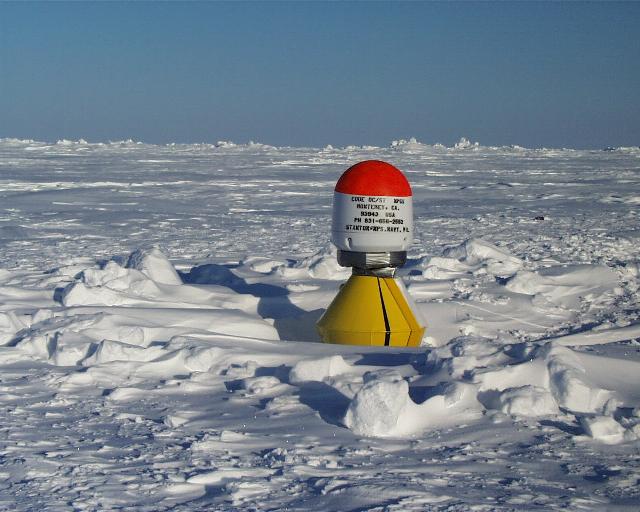ScienceAssosciate Research Professor Tim Stanton and his research group have been funded to develop autonomous, ice-deployed drifting buoys capable of measuring vertical fluxes of momentum, heat and salt in the upper ocean in Polar regions, through the National Science Foundation, Office of Polar Programs "Polar Instrumentation and Technology Development" program. As the ocean provides a critical "thermal flywheel" in the Arctic heat balance on seasonal and longer time scales, accurate measurement of vertical heat fluxes through the upper ocean is critical in determining the balance between radiative and sensible heat fluxes at the ice surface, changes in ice cover, thickness and heat content, and ocean heat content which all interact over seasonal scales to maintain ice cover in the Arctic. The insulating properties of the Arctic ice cover largely decouple rapid, strong variations of surface heat fluxes from the ocean interior. Furthermore, since still water is also a very good insulator, the vertical transport of heat to and from the salt stratified ocean interior is determined primarily by the rate at which the upper ocean is stirred. This stirring occurs when wind blows over the ice and moves, forming a turbulent boundary layer extending down from the ice toward the stratified pycnocline, typically at 30m depth. The flux buoy measures these small net fluxes within the stirred "mixed" layer below the ice. While direct measurement of local vertical fluxes has been regarded as difficult in the ocean, recent advances in high resolution, low-powered sensor technology, (particularly in current measurement), and the stable platform provided by the perennial ice pack, provide a path to measuring long term, unattended vertical fluxes within the upper ocean. Recent work by the PI in observing ocean fluxes during ANZFLUX and SHEBA have provided instrumentation and analysis experience which is being used with these new sensor technologies to robustly estimate fluxes in a remote instrument, without the luxury of having access to the raw data streams. The autonomous flux buoy uses a very low power acoustic travel time current sensor, a stable conductivity cell and a very high resolution thermistor to measure velocities, salinity and temperature in the same small volume within the ocean mixed layer. Correlating fluctuations of vertical velocity with horizontal velocity fluctuations, temperature fluctuations and salinity fluctuations provide estimates of the vertical transport of momentum, heat and salt through the ocean mixed layer (see for example, McPhee and Stanton, Turbulence in the statically unstable oceanic boundary layer under Arctic leads, Journal of geophysical Research, pp6409-6428, March 1996). The primary scientific motivation for the flux buoys is to use them in conjunction with other autonomous, ocean, ice, and atmospheric observation systems to provide a means of studying changes in the Central Arctic Basin environment over long periods. The Long-Term Observations in Arctic program has yearly installations of automated instrumented buoys at the North Pole, including PMEL met buoys, a CREL ice flux buoy, and a JAMSTEC ice/ocean buoy. This collaboration immediately provides both vital logistics infrastructure and supporting surface flux and upper ocean structure measurements to provide a meaningful study of the heat / ice balance as the buoy cluster drifts through the Arctic Basin. CreditsSoftware Development: Jim Stockel and Ric CastilloHardware Engineering: Rob Wyland, Jim Lambert Assembly and Logsitics: Keith Wykoff and Ron Cowen |
